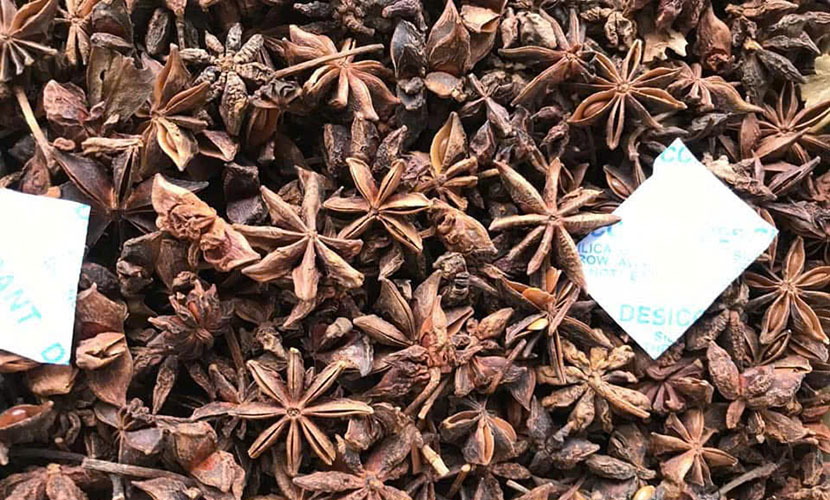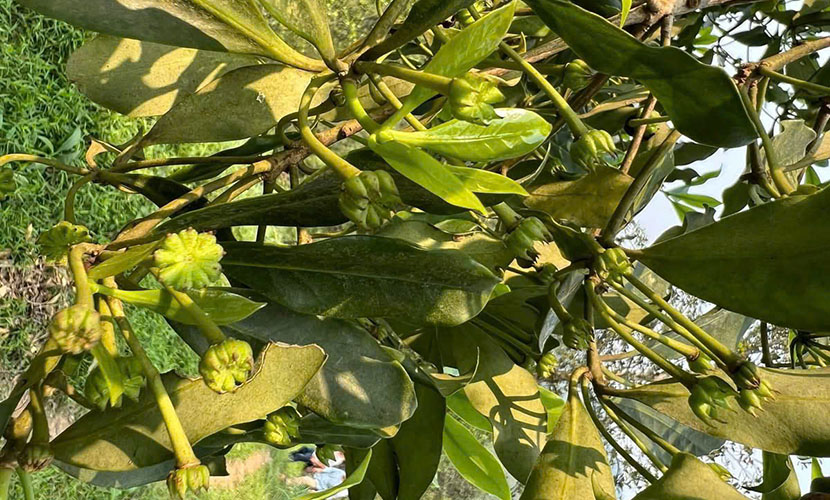
Currently, Cao Bang province owns more than 5,000 hectares of premium star anise. Star anise brings prosperity to the local people of Cao Bang and provides high-quality seedlings for the entire province. Also, helps many residents develop their economy through this key local crop.
In the past, star anise was planted mainly to reforest barren hills and mountains. However, today it has helped many people in the northern mountainous regions become wealthy.

Premium star anise for export
Premium star anise trees are suitable for the local climate and soil conditions and offers high economic returns. Therefore, Cao Bang province has incorporated star anise into its economic development strategy. In addition, the province has aimed to make star anise tree a key crop in driving local economic growth.
Through various programs and projects, the province has invested in seedlings, provided technical guidance on cultivation and care. Also, the province has launched public awareness campaigns to encourage farmers to expand star anise cultivation.
Thach An district is currently seeing strong growth and has the largest area of star anise cultivation in the province. The district has 2,560 hectares, mainly in communes such as Van Trinh, Duc Xuan, Le Lai, Thuy Hung…
Trung Khanh district currently has over 1,000 hectares of star anise, with about 90% of the area already in harvest. The district’s average annual output of fresh star anise flowers ranges from 2,500 to 3,000 tons.

Fresh organic star anise
Thanks to star anise cultivation, many households now earn between 100 and 200 million VND per year. Star anise has truly brought high incomes for many residents in Trung Khanh and Thach An districts.
Premium star anise is a key high-value crop with a high economic value. Therefore, the districts are actively promoting new planting and the replacement of old, low-yielding star anise trees. With support policies, local authorities have provided seedlings and fertilizers to help farmers expand their star anise cultivation areas.
Growing star anise is relatively simple, which only requires care and protection during the early stages. Once the trees grow taller than one meter, they need much less maintenance or pest control than many other crops. Meanwhile, they offer stable economic returns and long-term yields.

Fresh star anise from Vietnam
In recent years, local authorities have widely disseminated the entire cultivation process to each household. They include seed selection, seedling raising, planting, care, and protection to harvesting. As a result, it helps improve productivity and product quality.
Farmers have worked hard to clear star anise forests once or twice a year and apply fertilizers to promote healthy tree growth. Therefore, yields have increased, and production is no longer as dependent on weather conditions as before.
Statistics show that Cao Bang now has over 5,000 hectares of star anise. They have concentrated mainly in Thach An, Trung Khanh, Bao Lac and Bao Lam districts. Each year, the majority of star anise is sold to traders inside and outside the province, who export it to China.
To increase the economic value of star anise, several households have invested in machines to extract star anise essential oil. Some of these star anise essential oil products have achieved 3-star OCOP (One Commune One Product). They are rated highly in terms of quality.

Star anise essential oil from Vietnam
Processed star anise fetch higher prices than raw ones, but the number of households involved in processing remains small-scale. This presents a challenge in developing the star anise industry. Also, most of the province’s star anise products still heavily rely on the Chinese market.
Cao Bang’s soil conditions are highly suitable for growing star anise. In the coming years, star anise will remain a multi-purpose forestry crop. Also, it is a key driver in economic development and poverty reduction in many localities.
The potential of star anise is immense, and it can be developed further. Government departments, agencies, and organizations are continuing to raise awareness among the public about transitioning to high-value crops.
To support deep processing of star anise, there is a need for factories that can purchase and process the entire output. With investment in processing facilities, star anise can achieve even greater added value. Therefore, it will contribute to its transformation into a sustainable economic resource and a reliable source of income for local communities.
Vietnamese source: https://sanphamvungmien.vn/san-xuat-tieu-thu/2022/12/tinh-cao-bang-dau-tu-vao-che-bien-tu-hoa-hoi-giup-day-manh-phat-trien-kinh-te-dia-phuong
